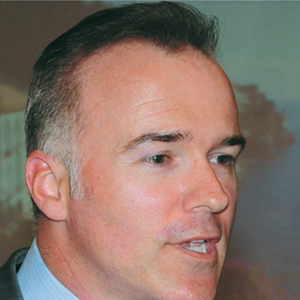
FRONT OF THE ROOM – Brian Lange
Predictable approaches may not pull learners in
 I had something memorable happen recently and wanted to share it as a reminder —and an example — of how important creative or compelling openings are in a presentation.
I had something memorable happen recently and wanted to share it as a reminder —and an example — of how important creative or compelling openings are in a presentation.
During a recent review activity, I gave each table team one topic from the workshop to prepare a five-minute recap presentation to the class. I found myself stumped and intrigued during each of their openings.
It turns out the teams each incorporated a “creative” opening by either telling a story, referencing a current event from a periodical or newspaper or otherwise including the audience in an interactive discussion. These openings serve to deliver something different to the audience, to take them out of the classroom in a figurative way. They generated a personal connection to the topic as well as created context for the coming content.
What I came to realize during the opening of each of the four presentations was that I couldn’t recall — or initially tell — what topic I had given each group. What I found fascinating was how I had to really listen and participate to see where they were heading and which topic I had assigned to them.
This was in stark contrast to what happens typically: The presenter gives an intro to the specific topic being covered and outlines exactly how the topic will be explored. This is predictable— and quite frankly, expected — and may not really pull me in.
Audience Engagement
One facet of each presentation was how the presenters engaged with the audience throughout the openings. If they referenced an article, they asked if anyone in the audience was familiar with it —and then invited the person to expand on the subject.
When they asked audience members whether they had experienced a particular situation in the past, they invited some to share the example. The remaining folks were able to “connect” with their own past experience, and “use” it moving forward in the activity.
In each presentation, the presenters accessed the knowledge and experience in the room and put it to work. This served to make the learning more personal: If I passively observe a slide and partially listen to a speaker run through the outline of upcoming content, I’m not really personally connected or invested in the topic.
However, when the presenter engages me to consider my experience, and bring it into the classroom, I become a part of the learning experience. I can then adequately compare the new knowledge being shared with my own previous experience; it becomes two-dimensional, versus one-dimensional with simply observing a presenter’s journey.
Be Unique
It’s easy to view a presentation as, “OK, I need to get through this, this and that. I’ll wrap up by reviewing key points, and then ask if there are any questions.” However, if we think about the audience— and try to figure out how we can get them to care and connect with our material — we might find that the usual approach may not cut it.
“Different” and “unexpected” are good. If I tilt my head as a participant to ponder what the speaker is communicating — and why they’re communicating it — it pulls me in. I must tune in to see where it’s going!
By the time the speaker makes the “bridge” to the actual topic at hand, I’m committed. My curiosity compels me to follow along, to attempt to guess where the speaker is headed.
As the bridge is revealed (“…and this is what got me thinking about our time together; how in this workshop we will be…”) I may nod my head with the realization of the intention of the speaker. And voila! I may be hooked and ready to learn — certainly more so than if I just read an objectives slide with multiple bullets, no pictures and no part of me in the equation.
The presenters in that review activity reminded me of a powerful aspect of engaging with audiences — and I am grateful.
 Brian Lange is with Perim Consulting and serves as lead facilitator for LTEN PrimeTime! For Trainers Core and Masters Workshops. Email Brian at blange@perim.com or connect with him on LinkedIn at www.linkedin.com/in/brianplange.
Brian Lange is with Perim Consulting and serves as lead facilitator for LTEN PrimeTime! For Trainers Core and Masters Workshops. Email Brian at blange@perim.com or connect with him on LinkedIn at www.linkedin.com/in/brianplange.








